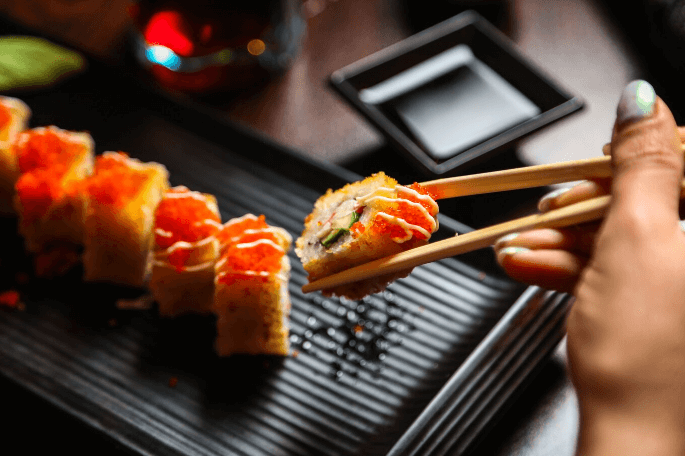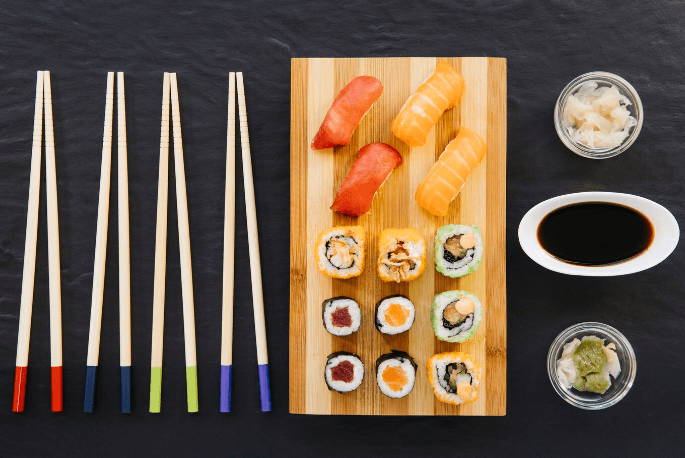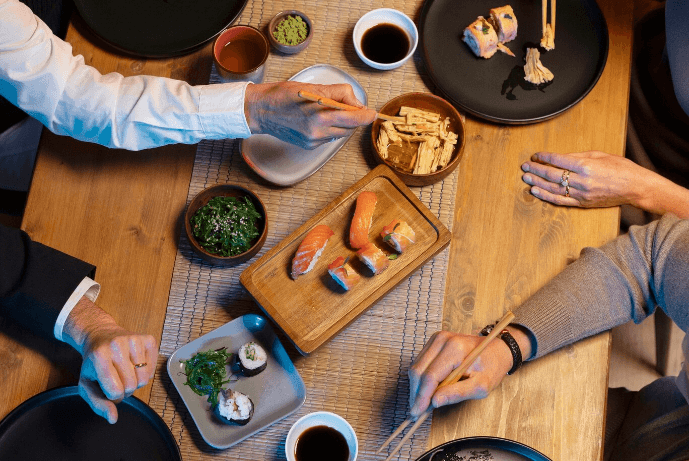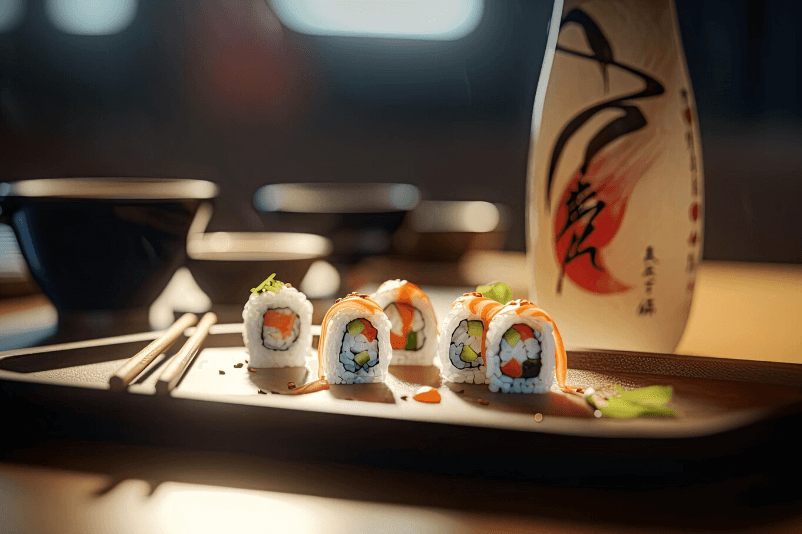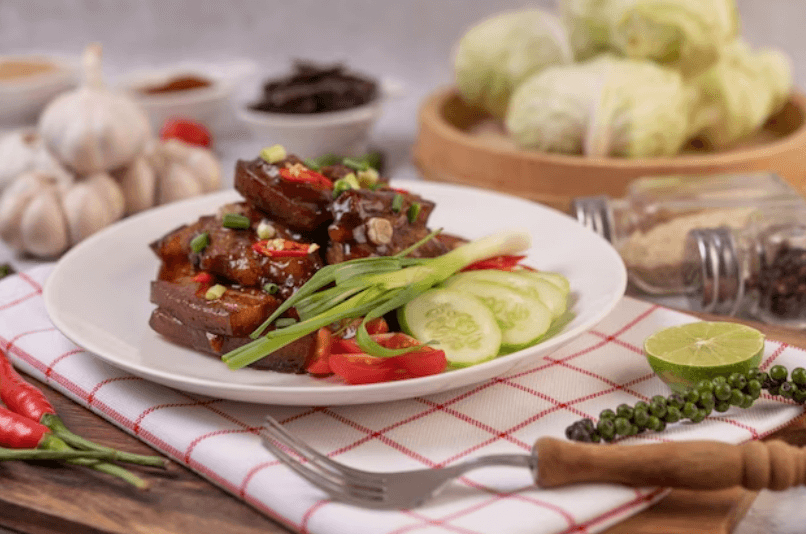Know Your Sushi: Types & Terms You Need to Know Before Ordering
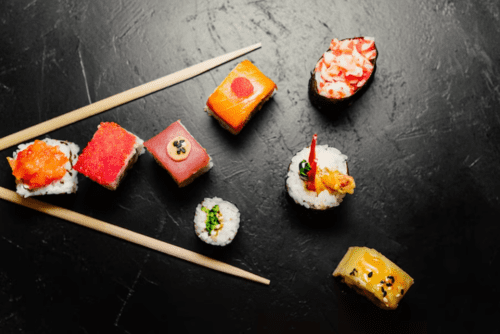
Are you a sushi lover but get overwhelmed with the different types of sushi on the menu? Do you find yourself ordering the same rolls every time, just because it’s familiar? Well, it’s time to step up your sushi game and know your stuff! In this article, we’ll explore common types of sushi, popular ingredients used in making them, Sushi-related terms and etiquette as well as tips for ordering. By the end of this post, you will be a sushi pro and impress even the most seasoned sushi connoisseurs. Plus, we’ll throw in some bonus tips for effortless car maintenance – so keep reading till the end!
Importance of knowing sushi types and terms
Knowing the types and terms of sushi is essential for any sushi lover or someone who wants to try it for the first time. It’s more than just ordering a California roll. Understanding sushi can elevate your dining experience and make you appreciate its culture.
By knowing the different types of sushi, you can select dishes according to your preference or dietary restrictions. For instance, if you’re a vegetarian, you may want to order maki rolls that have vegetables as fillings instead of raw fish.
Sushi also has specific terminology that may seem confusing at first but is easy to learn. Learning these terms can help avoid misunderstandings when placing orders and show respect for Japanese culture.
Knowing how sushi is made and what ingredients are used will give an idea of what flavors and textures expect from each dish. It’s good to know which fish tastes better with wasabi or soy sauce because some sushis need no extra condiments at all!
Knowing about sushi types and terms can help enhance your dining experience by allowing you to make informed choices based on preferences, dietary needs, cultural awareness, taste buds, allergies among others!
Common Types of Sushi
Sushi is a popular Japanese dish made with vinegared rice, raw fish or other seafood, and various ingredients. There are several types of sushi that you can order at a restaurant or make at home.
One of the most common types of sushi is Nigiri, which consists of a small hand-formed ball of rice topped with sliced raw fish or other seafood. It’s usually dipped in soy sauce before eating.
Another popular type is Sashimi, which refers to thin slices of fresh, raw fish served without any rice. This option is perfect for those who want to enjoy the pure taste and texture of the fish.
Maki rolls are another type that comes in different variations depending on its size and fillings. Hosomaki contains only one ingredient like cucumber or tuna; Futomaki has more than one filling while Uramaki has seaweed inside-out roll filled with tamago (sweet egg), avocado, crab meat and many others.
For those who prefer something unique there’s Gunkanmaki: oval-shaped balls made from sushi rice wrapped around nori seaweed then stuffed with roe eggs, oyster pieces or uni (sea urchin).
Lastly we have Chirashi – a bowl full of sushi toppings including sashimi cuts along with vegetables such as cucumbers and carrots over top cooked white/brown/or black sticky rice!
These are just some examples but there’s an endless variety when it comes to this beloved dish!
Nigiri
Nigiri is a popular sushi type that consists of a small ball of rice topped with a thin slice of raw fish or other seafood. The name “nigiri” means “to press,” referring to the traditional method used to shape the rice by hand.
One of the main features that distinguish nigiri from other types of sushi is its simplicity. Unlike maki rolls, which can be quite elaborate and often contain multiple ingredients, nigiri usually has only one topping.
The quality of both the rice and the topping are essential in nigiri sushi. The rice should be sticky but not too compacted, while the fish or seafood should be fresh and cut into an appropriate size for each piece.
Nigiri can be enjoyed on its own as an appetizer or combined with other types of sushi for a complete meal. It’s also common to dip nigiri into soy sauce mixed with wasabi before eating it.
If you’re looking for a straightforward yet delicious sushi option, give nigiri a try!
Sashimi
Sashimi is a traditional Japanese dish that consists of thinly sliced raw fish or meat served with soy sauce and wasabi. The key to enjoying sashimi is the freshness of the ingredients, which should be carefully selected by skilled chefs who know how to prepare them.
One of the most popular types of fish used in sashimi is tuna, known for its rich flavor and buttery texture. Other common options include salmon, yellowtail, snapper, and mackerel. It’s important to note that not all fish are suitable for sashimi due to their texture or taste.
To properly enjoy sashimi, it should be eaten with chopsticks and dipped into the soy sauce and wasabi mixture before being consumed in one bite. This allows you to appreciate the flavors of both the fish and seasonings without overwhelming your palate.
Sashimi can also be enjoyed as a part of a larger meal alongside other sushi dishes like nigiri or maki rolls. Alternatively, it can be served as an appetizer before indulging in other Japanese cuisine like tempura or ramen.
If you’re looking for a fresh and flavorful way to experience Japanese cuisine, give sashimi a try at your next sushi outing!
Maki (including Uramaki, Futomaki, and Hosomaki)
Maki is a type of sushi that comes in different forms, including Uramaki, Futomaki, and Hosomaki. Maki refers to sushi rolls that are wrapped in nori seaweed with rice and fillings inside.
Uramaki is an inside-out roll where the rice is on the outside while the nori sheet wraps around it with various fillings such as crab stick, cucumber or avocado. It’s often rolled in sesame seeds for extra flavor and texture.
Futomaki means “thick roll” because it contains many ingredients such as vegetables, egg omelets or seafood like shrimp tempura. The roll has a diameter of about 2 inches (5 cm), making it more substantial than other types of maki.
Hosomaki means “thin roll,” which has only one main filling wrapped tightly by nori sheets and rice without any empty space between them. Common hosomakis include tuna or salmon with scallions or cucumber.
Makizushi can be enjoyed with dipping sauces like soy sauce mixed with wasabi paste and pickled ginger slices on the side to cleanse your palate after every bite.
Knowing what type of makizushi you prefer will help enhance your overall sushi experience when ordering at a restaurant or making sushi at home!
Gunkanmaki
Gunkanmaki is a type of sushi that originated in Japan. It is known as “battleship” or “warship” sushi because of its shape, which resembles a small boat. This type of sushi consists of a ball-shaped mound of rice wrapped in seaweed and topped with various ingredients.
The seaweed used for Gunkanmaki is usually larger than the one used for other types of sushi to create the distinctive shape. The rice can be seasoned with vinegar, salt, and sugar to add flavor and help it hold its shape.
Gunkanmaki can be filled with a variety of seafood such as salmon roe, sea urchin, crab meat, and squid. Vegetarian options like avocado or tofu can also be added as toppings.
One popular variation is the spicy tuna Gunkanmaki which features raw tuna mixed with chili oil or Sriracha sauce. Another variation includes scallops mixed with mayonnaise and masago (fish eggs).
Gunkanmaki’s unique shape makes it easier to load up on toppings resulting in an explosion of flavors in every bite!
Chirashi
Chirashi is a type of sushi that consists of a bowl of sushi rice topped with various ingredients, including fish, vegetables, and sometimes even fruits. The term “chirashi” means “scattered” in Japanese, which refers to the way the toppings are scattered on top of the rice.
One great thing about chirashi is that it allows for creativity when it comes to choosing toppings. Some popular options include salmon roe, tuna sashimi, egg omelette strips, avocado slices, and pickled ginger.
Another benefit of chirashi is its versatility. It can be served as a main dish or as an appetizer for sharing among friends and family. Plus, since there’s no rolling involved like other types of sushi (such as maki), it’s easier to make at home if you’re feeling adventurous.
Chirashi also offers a healthier option compared to other sushi varieties since it tends to have less mayonnaise-based sauces than some rolls do. Additionally, many ingredients used in chirashi are high in protein and healthy fats.
If you want to try something new at your next sushi outing or impress your guests with your culinary skills at home – give Chirashi a try!
Popular Sushi Ingredients
Sushi is a delicate dish that requires fresh ingredients to achieve the perfect blend of flavors. While there are endless variations, some ingredients are staples in most sushi dishes.
One popular sushi ingredient is raw fish, which can include tuna, salmon, yellowtail and more. Freshness is key when it comes to raw fish in sushi, as any hint of staleness can ruin the flavor profile.
Another common ingredient found in many types of sushi is avocado. Its creamy texture blends well with the rice and seafood components while adding a touch of healthy fats to your diet.
Other vegetables such as cucumber and carrot are often included in maki rolls for their crunchiness and refreshing taste. Pickled ginger is also frequently served alongside sushi as a palate cleanser between bites.
Soy sauce and wasabi are condiments commonly used with sushi for added flavoring. Soy sauce brings out the savory umami flavor while wasabi adds heat to complement the other flavors present.
In recent years, non-traditional ingredients like cream cheese, crab meat or even fruit have been incorporated into modern takes on traditional Japanese cuisine. These unconventional twists offer new experiences for adventurous foodies looking for something unique.
Understanding these popular ingredients will help you appreciate different types of sushi available at restaurants near you!
Sushi-related Terms and Etiquette
When it comes to ordering sushi, understanding the terms and etiquette is crucial. Here are some common sushi-related terms you may come across:
1. Wasabi: A spicy green paste that is typically served with sushi. It’s made from a plant called wasabi japonica.
2. Soy Sauce: A salty condiment made from fermented soybeans that is often used as a dipping sauce for sushi.
3. Gari: Pickled ginger slices that are usually eaten in between different types of sushi to cleanse the palate.
4. Nori: Thin sheets of dried seaweed that are commonly used to wrap around rice and other ingredients in certain types of sushi rolls.
5. Omakase: This term means “I’ll leave it up to you” in Japanese and refers to letting the chef choose which dishes or types of fish they will serve you during your meal.
When it comes to etiquette, there are a few things to keep in mind:
1. Use chopsticks if possible – using your hands is considered impolite.
2. Dip your sushi into the soy sauce lightly so as not to overpower its natural flavors.
3. Avoid adding too much wasabi since most chefs already add an appropriate amount when preparing each dish.
By understanding these common terms and following basic etiquette practices, you can fully appreciate all aspects involved with eating deliciously fresh-made Sushi!
Tips for Ordering Sushi
When it comes to ordering sushi, there are a few tips that can help you make the most of your dining experience. First and foremost, don’t be afraid to ask questions! Sushi chefs are typically very knowledgeable about their craft and can provide valuable insight into the different types of sushi on the menu.
Another tip is to start with simpler options before moving on to more complex ones. Nigiri and sashimi are good choices for beginners, as they typically contain fewer ingredients than rolls like uramaki or futomaki.
It’s also important to consider freshness when ordering sushi. Look for restaurants that use high-quality, fresh ingredients and avoid places where the fish has a strong odor or doesn’t look appetizing.
When it comes to portion sizes, remember that sushi is meant to be enjoyed in small bites. Don’t order too much at once – instead, try a few different options and see what you like best.
Consider pairing your sushi with a beverage that complements its flavors. Green tea is a classic choice that works well with many types of sushi, while sake can add an extra layer of complexity to your meal.
Pairing Sushi with Beverages
Pairing Sushi with Beverages
Pairing sushi with the right beverage is crucial to enhance your overall dining experience. Traditionally, sake is the go-to drink when it comes to sushi, but there are other options that can complement different types of sushi.
When it comes to light and delicate sushi such as sashimi or nigiri, a crisp and refreshing white wine or champagne works well as it cleanses your palate between each piece. For more flavorful rolls like futomaki or uramaki, a full-bodied red wine pairs best due to its ability to stand up against strong flavors.
If you prefer non-alcoholic beverages, green tea is an excellent option as it helps ease digestion and cleanse your palate. A cold beer also goes well with heavier rolls like tempura-based maki.
Ultimately, the key is finding balance between the flavors of the sushi and the beverage. Don’t be afraid to experiment and find what works best for your taste buds!
Conclusion
Knowing the different types of sushi and its related terms is essential if you want to fully enjoy this delicious Japanese cuisine. With this guide, we hope that it will help you become more confident in ordering sushi at your favorite restaurant or even making your own at home.
Remember that there are various types of sushi, such as Nigiri, Sashimi, Maki (including Uramaki, Futomaki, and Hosomaki), Gunkanmaki and Chirashi. Each type has unique ingredients and preparation methods that give them their distinct flavor profiles.
Apart from knowing the different types of sushi and its ingredients, understanding proper sushi etiquette is also important when dining in a Japanese restaurant or with Japanese friends. By following these simple tips for ordering sushi like pairing it with the right beverage will make your experience more enjoyable.
Now that you know all about easy car cleaning tips,sushi types,time-saving car care,and much more,start exploring new flavors today!
FAQs
What to look for when buying sushi?
Freshness: Make sure the ingredients, especially the fish, are fresh. The fish should have a clean smell and not smell fishy or have a slimy texture.
Quality: High-quality sushi rice should be firm yet tender, and the fish should be expertly sliced.
Variety: Look for a variety of sushi types and ingredients to enjoy different flavors and textures.
Presentation: Good sushi should be visually appealing, with attention to detail in its presentation.
Reputation: Choose a sushi restaurant or store with a good reputation for quality and hygiene.
How are the types of sushi?
Sushi can be categorized based on its ingredients, preparation method, and presentation. Some common types include:
Nigiri: Hand-pressed sushi with a slice of fish or seafood on top of a small bed of rice.
Sashimi: Thinly sliced raw fish or seafood, served without rice.
Maki: Rolled sushi with rice and various fillings, wrapped in seaweed (nori).
Uramaki: Inside-out rolls, with rice on the outside and nori on the inside.
Temaki: Hand-rolled cone-shaped sushi, with rice and fillings inside a nori wrap.
Chirashi: A bowl of sushi rice topped with a variety of sliced fish and other ingredients.
Inari: Fried tofu pouches filled with sushi rice.
Oshi: Pressed sushi, where ingredients are layered and pressed into a square or rectangular shape.
What are types of sushi called?
The different types of sushi have specific names based on their preparation and presentation, as mentioned above (Nigiri, Sashimi, Maki, Uramaki, Temaki, Chirashi, Inari, and Oshi).
What are the basics of sushi?
The basics of sushi include the following components:
Sushi rice: Short-grain rice seasoned with vinegar, sugar, and salt.
Fish or seafood: Fresh, high-quality raw or cooked fish and seafood.
Nori: Seaweed used for wrapping sushi rolls.
Vegetables: Commonly used vegetables include cucumber, avocado, and pickled radish.
Condiments: Soy sauce, wasabi, and pickled ginger are typically served alongside sushi.
What do sushi terms mean?
Some common sushi terms include:
Nigiri: Hand-pressed sushi with a topping, usually fish or seafood, on a small bed of rice.
Sashimi: Thinly sliced raw fish or seafood, served without rice.
Maki: Rolled sushi with rice and various fillings, wrapped in seaweed (nori).
Uramaki: Inside-out rolls, with rice on the outside and nori on the inside.
Temaki: Hand-rolled cone-shaped sushi, with rice and fillings inside a nori wrap.
